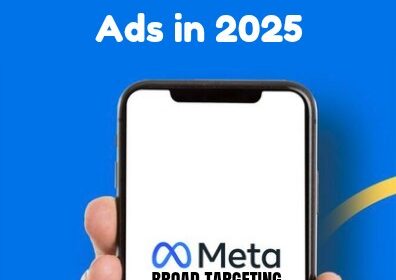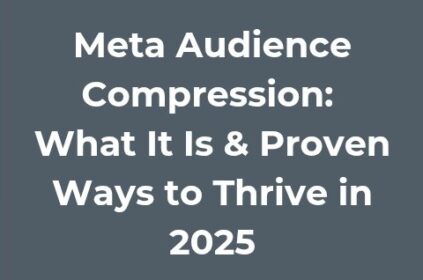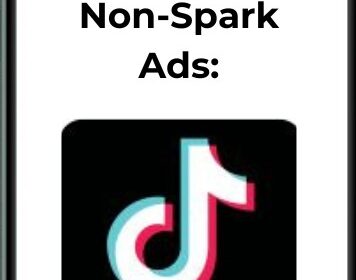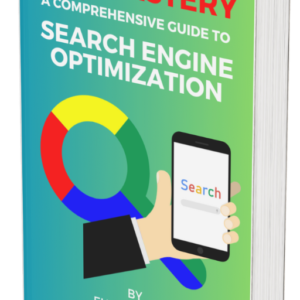PPC campaigns in 2025 are no longer just about who bids highest—they’re about who budgets smartest.
With competition rising and advertising platforms evolving, the margin for error is thinner than ever.
And, that’s where effective PPC budget allocation strategies come in.
Whether you’re running Google Ads, Meta, TikTok, or a multi-channel campaign, how you distribute spend across audiences, campaigns, and funnel stages determines whether you hit break-even or scale profitably.
#1. Allocate Budget by Funnel Stage, Not Just Campaign Type
Most advertisers still segment their PPC budget based on channel (Google vs Facebook) or campaign type (Search vs Display), but this doesn’t align with how people buy in 2025.
A more effective method is to map your funnel stages—awareness, consideration, and conversion—and allocate budgets accordingly.
For example, use 30% of your spend for awareness (YouTube, Meta Reels, TikTok), 40% for consideration (Google Display, Facebook Retargeting), and 30% for conversion (Google Search, branded campaigns, shopping ads).
These proportions may shift depending on your business model or seasonality, but structuring budgets around buyer intent leads to more predictable ROAS.
This tactic also helps when scaling: instead of simply increasing spend on what’s working, you identify which stage is bottlenecked and fund that part of the journey.
These are the kind of PPC budget allocation strategies top advertisers are leaning into now. When budgets are tight, this ensures every dollar serves a clear role in guiding the user to convert.
#2. Use Historical ROAS Data to Guide Distribution
If you’re not adjusting your budget based on past performance, you’re guessing.
A disciplined review of historical ROAS by campaign, audience, and device provides a clear roadmap for where your money actually performs.
For instance, if mobile placements consistently outperform desktop on ROAS, they should receive higher budget priority.
The same applies to geography. If Lagos and Abuja drive better conversion rates than Port Harcourt, reallocate your daily spend cap to favor higher-yield zones.
Platforms like Google Ads and Meta Ads Manager now provide this level of granularity by default, and failure to act on it is simply budget waste.
These insights also let you cap investment in low-performing segments while doubling down on proven winners.
This data-driven approach to PPC budget allocation strategies reduces over-exposure to underperformers and creates room for experimentation in untapped segments.
#3. Segment Campaigns by Profit Margin, Not Just Revenue
Chasing revenue is a trap—especially in high-competition PPC markets. What really matters is how much profit you retain after ad spend.
That’s why one of the most impactful PPC budget allocation strategies in 2025 is segmentation by margin, not revenue.
If you sell three product lines with similar average order values but varying cost structures, they shouldn’t get the same budget.
Allocate more to the ones with higher profit margins per conversion.
For instance, if Product A has a 40% margin and Product B only 15%, Product A can tolerate a higher cost per click while still remaining profitable.
Tools like Shopify Profit Analytics or WooCommerce Profit Reports make it easy to visualize margin-based performance.
By pairing these with ad platform ROAS data, you can shift budget to campaigns that generate both sales and sustainable returns—not just vanity metrics.
#4. Balance Automated and Manual Bidding with Performance Safeguards
Smart Bidding strategies like Target ROAS or Maximize Conversions are widespread in 2025, but they’re not foolproof.
Many advertisers mistakenly allocate all budgets to automated bidding without considering the campaign lifecycle stage or audience size.
An ideal approach is to blend automation with manual control.
Use Smart Bidding for high-volume, mature campaigns with consistent conversion data, but apply manual CPCs or enhanced CPCs for new tests or niche audiences where machine learning hasn’t stabilized.
More importantly, layer automation with performance safeguards.
Tools like Google Ads’ budget pacing alerts or third-party rules from Optmyzr and Revealbot allow you to pause campaigns that exceed cost-per-acquisition thresholds or drop below ROAS minimums.
This hybrid method is one of the most reliable PPC budget allocation strategies, especially for brands managing multiple channels.
It ensures efficiency without giving up full control—and protects against algorithmic misfires that could drain your budget.
#5. Align Budget with Customer Lifetime Value (CLV)
Allocating more to campaigns that drive high CLV users can transform your overall ad profitability. Instead of simply looking at immediate return, factor in the full value of a customer over 6 to 12 months.
A campaign with break-even ROAS today may still be worth scaling if those users convert again, subscribe, or refer others.
CRMs like HubSpot, Klaviyo, or Segment allow you to track CLV by acquisition source. Sync this with your ad platform data to identify which campaigns attract long-term customers.
You can then structure PPC budget allocation strategies that prioritize sustainable growth.
For example, if Search Campaign A brings in subscribers who stay 9 months, while Campaign B draws one-time buyers, it makes sense to fund A more heavily—even if B has lower cost-per-click.
Think of CLV-adjusted budget planning as the antidote to short-termism in performance marketing.
#6. Set Budget Floors and Ceilings Based on Predictive Forecasts
As PPC platforms become increasingly volatile, many advertisers use real-time signals to shift spend.
That’s useful, but insufficient on its own. In 2025, leading teams are applying predictive forecasting to establish spend boundaries before campaigns even launch.
Using tools like Google Ads Forecast, Madgicx, or internal BI dashboards, you can model projected ROAS, CPA, and click volume based on historic data and seasonal patterns.
From there, assign minimum and maximum spend caps per campaign. This guards against runaway costs during peak bidding wars and prevents underspending on high-ROI days.
This approach introduces structure to your PPC budget allocation strategies, helping align marketing and finance.
It also provides a reference point to evaluate actuals against forecast—so you’re not just reacting to anomalies, but refining your assumptions with each campaign cycle.
#7. Allocate Reserve Budget for Controlled Experimentation
It’s easy to become overprotective of campaigns that already work, but the best growth often comes from disciplined experimentation.
That’s why top advertisers in 2025 allocate 10–20% of their budget to controlled tests—new creatives, landing pages, audience segments, or even channels like Reddit or Pinterest Ads.
A reserve budget allows you to innovate without jeopardizing your core ROAS.
Use platforms like Google’s Drafts & Experiments or Meta’s A/B testing tools to run clean comparisons. Then only scale winners into your main budget.
Including this in your PPC budget allocation strategies ensures your account evolves with platform changes and user behavior.
Brands that skip testing get stuck recycling stale creative and burning through audience fatigue—those that test continuously discover new efficiencies and scale faster.
Understanding the Hidden Costs Behind Campaign Waste
Many advertisers don’t realize how much budget gets lost in small leaks—overlapping audience targeting, underperforming keywords left running, or lack of proper dayparting.
These inefficiencies are often masked by top-line metrics like impressions or clicks.
To avoid this, conduct monthly audits of your account structure.
Pause or consolidate redundant ad sets, eliminate overlapping exclusions, and apply negative keywords based on recent search terms reports.
Use heatmaps or automated scripts to spot and cap off-hours spend spikes that don’t convert.
Incorporating this type of cleanup into your PPC budget allocation strategies recovers wasted spend and funnels it into more efficient campaigns.
Even a 5% reallocation from waste to winner can make the difference between breakeven and profit at scale.
How to Get Leadership Buy-In for Your PPC Budget Plan
Marketers often struggle to get finance teams to approve higher budgets—even when performance is strong.
The key is speaking their language: cost per acquisition, contribution margin, and forecasted payback.
Prepare a budget proposal that includes projected ROAS by channel, historic performance trends, and potential upside scenarios.
Visualize how a 10% increase in spend could yield a 15% rise in profit based on past elasticity. This frames PPC budget allocation strategies as investments, not just spend.
Back this up with dashboards that show actuals vs forecast and build confidence over time. Use tools like Looker Studio or Supermetrics to automate reporting.
The more transparent and predictable your budgeting process becomes, the easier it is to get approvals for scaling.
When to Reallocate Budget Mid-Campaign
The right time to reallocate isn’t based on gut feel or platform prompts—it’s based on performance milestones.
For example, if after 7 days a campaign has reached 1,000 impressions but zero conversions, that’s an underperformer.
On the flip side, if a new ad set has double the ROAS of others, it’s a scaling candidate.
Use rolling 7-day and 14-day windows to assess spend efficiency and enforce automated rules to pause losers and redirect funds to winners.
These actions should be built into your PPC budget allocation strategies, not handled reactively.
More importantly, align reallocation with your business cycles. A campaign might be lagging due to low demand in Week 1 but poised for success during a promo in Week 3.
Contextual judgment, guided by metrics, leads to better outcomes than blind automation.
Conclusion
The best PPC budget allocation strategies in 2025 are those that balance discipline with agility.
Don’t just set a number and forget it—build systems that respond to real performance, protect against waste, and align with long-term business goals.
Structure your spend across the funnel, link budget to margin and CLV, and protect testing space for innovation.
Layer forecasts on top of real-time data, and always use safeguards to prevent overspend. In a world where cost-per-click is climbing across platforms, smart allocation is the new competitive edge.
Whether you manage five campaigns or fifty, these strategies help ensure your budget isn’t just spent—but invested for growth.










